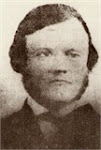The Last Mughal: The Fall of a Dynasty: Delhi, 1857 by William Dalrymple
16 of 16 people found the following review helpful:
"The light has gone out of India. The land is lampless.", August 12, 2007
A great strength of 'The Last Mughal: The Fall of a Dynasty: Delhi, 1857' by William Dalrymple (White Mughals: Love and Betrayal in Eighteenth-Century India) is its use not only of more familiar British sources, but also many Indian (Urdu and Persian) sources on one of pivotal events in the history of both India and the British Empire, the Sepoy Mutiny of 1857 or the First War of Indian Independence as it is also sometimes called.
Dalrymple describes his excitement at discovering some 20,000 Persian and Urdu documents in the Indian national Archives. A particularly important source was the 'Dihli Urdu Akhbar' a principal Urdu newspaper that continued to publish during the revolt. These sources allow Dalrymple to give voice to the Indian as well the British point of view.
In 1857 the sepoys of the British Raj's Bengal Army mutinied (the reasons are explored in the book, but were at least partly due to a clash of newly arrived Christian evangelicals and adherents of Islam and Hindu). What began as mutiny became something larger at least in part because the Mughal Emperor Bahadur Shah Zafar II endorsed it.
Dalrymple centers his telling of the tale on Zafar, the man destined to become the last Mughal emperor. By 1857 the Mughal Emperor possessed no real tangible power and was nothing more than the King of Delhi as he was derisively called. An aesthete himself, Zafar was singularly well-suited to his role as head of a court that elevated culture, poetry in particular, but wholly unsuited by temperament and age (he was 82 years old) to a role as leader of an armed revolt.
Delhi before 1857 was a remarkably tolerant mix of Hindu and Islam - roughly a 50/50 split - in part because of Zafar's manner of ruling. Zafar's acceptance of a titular leadership in the revolt meant that both Muslims and Hindi rallied to the cause. That symbolic role, however, was about all Zafar brought to the war.
The revolt began to flounder almost immediately due a lack of proper direction and discipline. The Sepoy regiments each acted independently and allowed a much smaller British force (ostensibly come to lay siege to the city) to survive repeated but serial attacks. The early stages of the revolt also saw horrific slaughter of noncombatant and unarmed British residents.
Eventually the British took the city and the revenge they took is described by Dalrymple in bloody detail. The killings were nothing short of mass murder and heartily endorsed by nearly every Britisher with any knowledge of it (William Howard Russell was one exception). Men who had lost family in the initial outbreak were allowed to massacre at will for months - Theo Metcalfe is the most notable example. Those locals not killed were left homeless and starving.
The British executed nearly the entire Mughal royal family and would have done so for Zafar, but for the promise that his life would be spared if he surrendered. It was a promise that the British determined they were bound to keep even though they didn't like it much.
One supposes this example represents Victorian attitudes about rectitude that the British somehow held in their heads at the same time that they authored unspeakable murdering sprees. In a somewhat lighter example, Dalrymple quotes a British soldier's letter written to his mum on the eve of battle in which the youth expresses his fear that engaging in the fight may cause him to swear!
As stated at the outset the rich sources give 'The Last Mughal: The Fall of a Dynasty: Delhi, 1857' its strength, but Dalrymple's over-reliance on the raw materials makes the book drag to its conclusion. For the last 100+ pages, Dalrymple sometimes gives over the narrative to his primary sources as page after page consists substantially of quotes from letters, reports, or memoirs. Dalrymple also spends only the briefest time placing the events of 1857 in a larger historical framework. Nonetheless, the book is a triumph of research and offers that rarity in historical writing, the truly fresh perspective. Dalrymple gives voice to the Indian perspective of the fall of Delhi. As the great court poet Ghalib so poignantly expressed it, "The light has gone out of India. The land is lampless."
Highly recommended.
Sunday, December 23, 2007
Subscribe to:
Post Comments (Atom)
















No comments:
Post a Comment